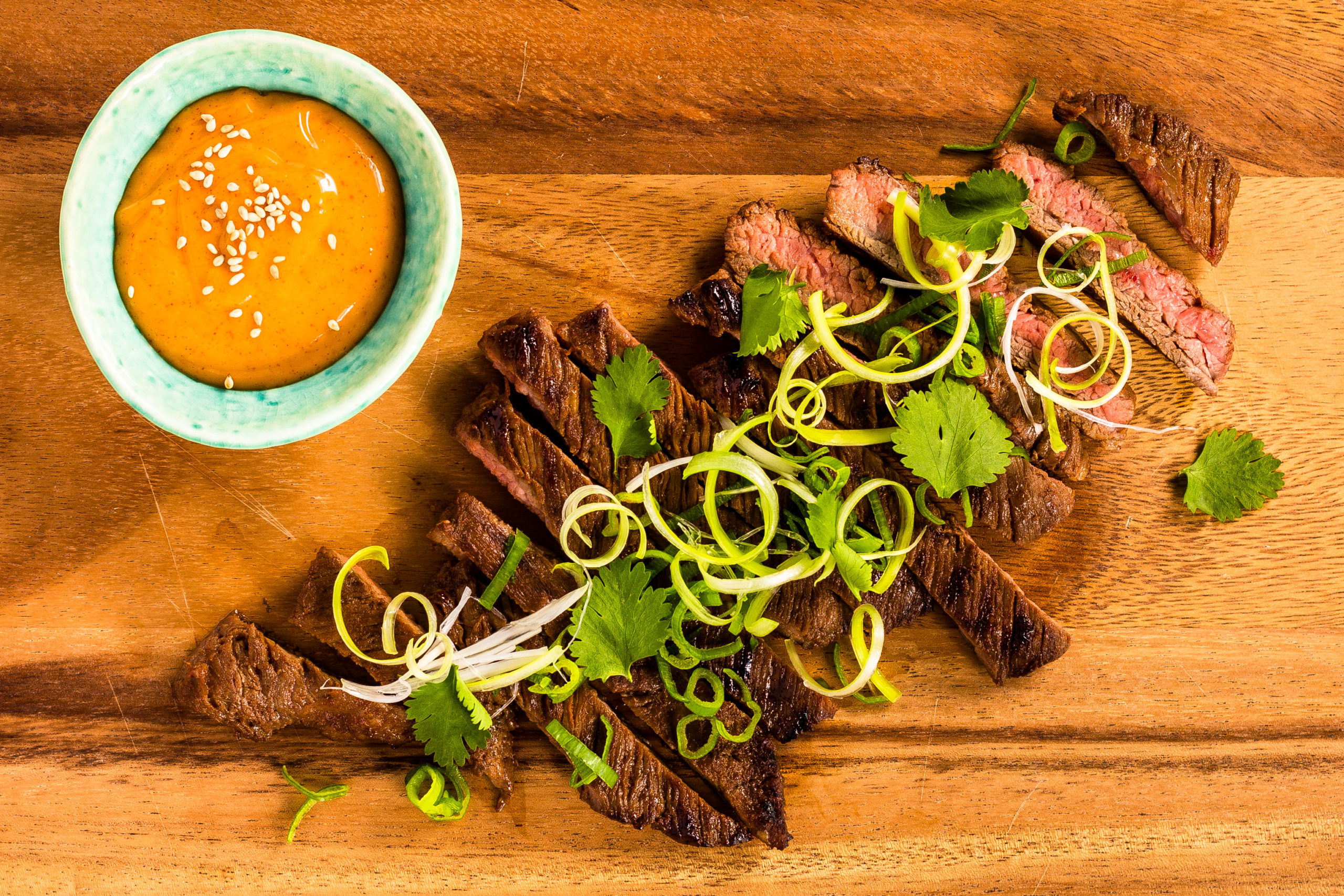Step 1
If your steaks are uneven, pound them with a meat hammer or a rolling pin until they are flat. This will also help tenderise the steaks.
Step 2
Combine all the ingredients for the marinade and massage it into the steaks. Store in a covered container or in a ziplock bag in the fridge for 2 hours or overnight if you have the time (this will yield the best results)
Step 3
Remove the steaks from the fridge an hour before you plan to cook them. Steaks cook best from room temperature. Normally you would salt the steak lightly 10 minutes before you cook it, but here the marinade has salt in already (in the gochujang, soy sauce and fish sauce), so I finish it with salt after slicing instead. Just a little.
Step 4
It is always best to cook skirt steak over high intense heat. You can barbecue this or fry it in a pan. If you are going to fry it, use the heaviest pan you have, preferably cast iron. Heat the pan over the highest heat for a few minutes and oil the steak before putting it in the pan (always oil the steak not the pan). For rare, depending on how thick your steak is, you need only cook it for 1 1/2 to 2 minutes on each side. When you press the steak you want it to have a little resistance but still be quite soft. The same applies for the barbecue Äì a high heat and quick sear.
Step 5
The steak will continue to cook once you take it off the heat so bear this in mind when cooking it to your preferred doneness, and always allow time to rest. Resting the meat allows the fibres to relax and the juices to redistribute.
Step 6
Mix the gochujang and mayonnaise well.
Step 7
Serve the steak sliced slightly on the diagonal and cut against the grain Äì this is important, otherwise you will have stringy steak. Sprinkle with sea salt, coriander and spring onion and serve the gochujang mayo on the side. There is never such a thing as too much gochujang! This also makes an epic steak sandwich.
Recipe courtesy of¬www.greatbritishchefs.com


